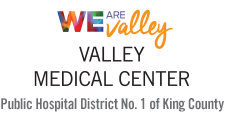Ear, Nose & Throat (ENT)

Ear, Nose, & Throat Care for Adults and Children

At Valley’s ENT Clinic, our board-certified otolaryngologists provide expert care for conditions of the ear, nose, throat, head, and neck. We combine advanced diagnostic technology with compassionate, personalized treatment to help you breathe easier, hear better, and live more comfortably.
Whether you’re managing chronic sinus issues, sleep apnea, voice changes, or hearing loss, our team is here to guide you every step of the way.
We diagnose and treat a full range of ear and hearing conditions, including:
- Ear infections (swimmer’s ear, middle ear infections)
- Ear pain, fullness, or drainage
- Hearing loss (sudden or gradual)
- Tinnitus (ringing or buzzing)
- Dizziness and balance disorders, including vertigo and Meniere’s disease
- Ear wax buildup (cerumen impaction)
- Eardrum perforation
- Cholesteatoma and mastoid conditions
- Ear injuries or deformities (split earlobe, cauliflower ear, cysts)
Treatment options include:
Comprehensive hearing evaluations, balance testing, and both medical and surgical treatments. Care may involve medications, in-office procedures for wax removal or ear drainage, and surgical repair for eardrum or middle ear conditions to restore hearing and comfort.
Our ENT team treats both chronic and acute nasal and sinus concerns such as:
- Sinus infections and chronic sinusitis
- Nasal congestion or obstruction
- Nosebleeds and nasal fractures
- Deviated septum and septal hematoma
- Nasal polyps and allergies (allergic rhinitis)
- Loss of smell or taste
- Post-nasal drip and nasal drainage
Treatment options include:
Individualized care that may involve medical therapy, allergy management, or minimally invasive procedures such as nasal endoscopy or balloon sinuplasty to open blocked passages and relieve congestion.
We offer evaluation and treatment for a variety of throat and voice disorders:
- Sore throat, tonsillitis, and infections
- Hoarseness or voice changes
- Difficulty swallowing (dysphagia)
- Reflux-related throat symptoms (GERD, globus sensation)
- Vocal cord nodules and lesions
- Oral and throat lesions
- Airway and tracheostomy care
Treatment options include:
Medical therapy for infections or reflux, voice and swallowing therapy, and surgical procedures for tonsils, adenoids, or vocal cord concerns. Our team partners with speech and swallowing specialists to help restore healthy voice and function.
Our specialists manage complex head and neck conditions including:
- Thyroid and parathyroid disorders
- Salivary gland swelling and stones
- Neck masses and enlarged lymph nodes
- Head and neck cancers
- Graves’ disease and Sjögren’s syndrome
- Facial or orbital fractures
Treatment options include:
Comprehensive evaluation using advanced imaging and diagnostics. Treatment may include medical management, surgical removal of benign or malignant growths, or minimally invasive procedures for thyroid and salivary gland conditions.
We provide advanced care for snoring and sleep-related breathing conditions, helping patients achieve more restful, healthier sleep.
Our team specializes in diagnosing and treating:
- Snoring and obstructive sleep apnea (OSA)
- Upper airway resistance syndrome (UARS)
- Shortness of breath related to ENT conditions
Treatment options include:
Comprehensive airway evaluations and both medical and surgical solutions to improve airflow and sleep quality. Options include nasal or soft tissue procedures and implanted nerve stimulation therapy, a minimally invasive treatment that activates airway muscles during sleep to reduce obstruction and promote steady breathing.
Our team provides gentle, family-centered ENT care for children of all ages:
- Ear infections and fluid in the ears
- Myringotomy (ear tube) placement for chronic infections or hearing concerns
- Failed hearing screenings
- Speech delay related to ear or throat conditions
- Tonsil and adenoid problems
- Tongue tie (frenotomy)
- Blocked tear duct
Treatment options include:
Comprehensive pediatric ENT care focused on comfort, safety, and family involvement. Treatments may include ear tube placement, tonsil and adenoid surgery, and procedures to correct tongue tie or tear duct blockage — all designed to support healthy growth, hearing, and speech development.



